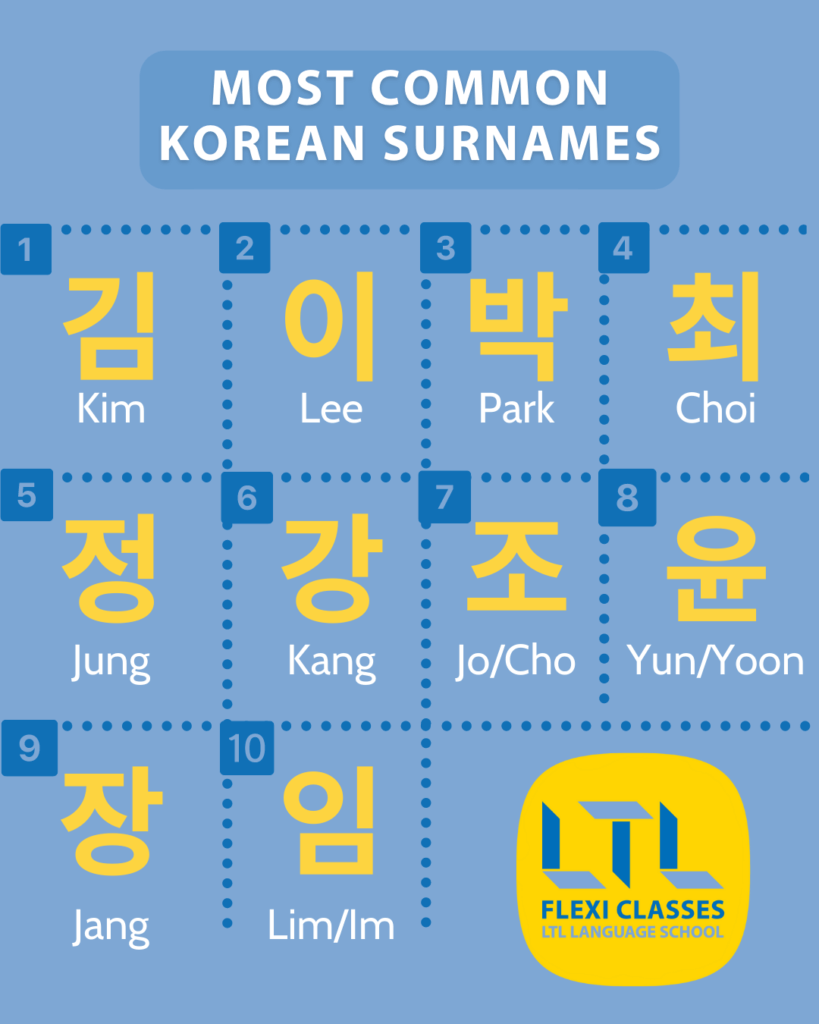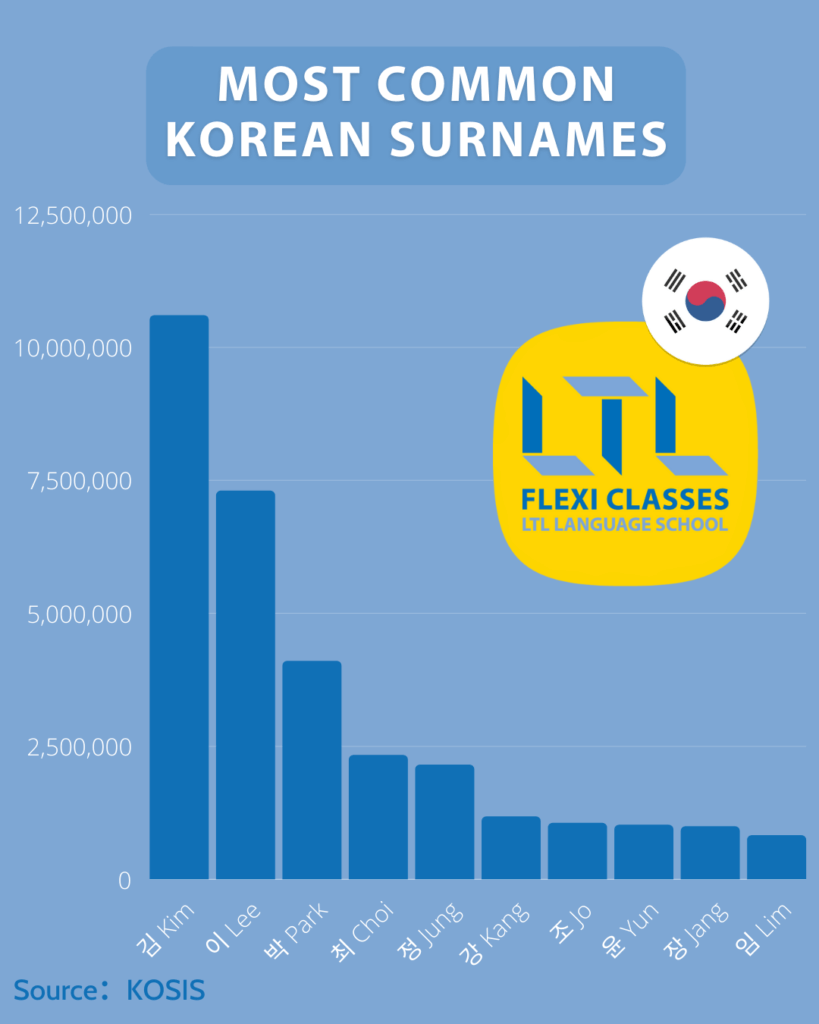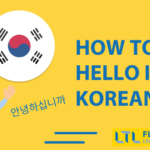Korean Names // What are the Naming Customs in Korea?
The History & Meaning Behind Korean Names

Welcome to our complete guide about Korean names!
We will cover a wide range of topics so make sure to read all of it, or skip to the chapter you’re interested in.
What’s in a name?
Names are important in every culture, and Korea is no such exception.
Korean names can have deep meanings or symbolism that aren’t obvious at first glance.
There are also long-established traditions that determine how parents name their children.
If you have Korean friends or watch some Korean dramas, you may have already noticed some of these naming customs.
Did you notice how most names have three characters, or that siblings often share similar-sounding names?
Let’s dive into Korean names and learn more about Korean naming customs.
Korean Names | Basic Structure
Korean Names | With Chinese Characters
Korean Names | Native Korean Names with Meanings
Korean Names | Generation Names
Korean Names | Korean Clans
Korean Names | More Facts
Korean Names | Get Your Own Korean Name
Korean Names | FAQs
➡️ Have a look at our Korean Name Generator to find out your own Korean name!
The Basic Structure of Korean Names

In Korea, the surname goes first, followed by the personal name.
For example, if your name was Mary Johnson, then it would be flipped to Johnson Mary.
In Korean your surname goes first, and your personal name comes last.
The vast majority of Korean surnames are composed of one character.
Every now and then, you might find a two-character surname that bucks this trend, but that is incredibly rare.
The most common Korean surnames are 김 [Kim], 이 [Lee], and 박 [Park], though there are plenty of other surnames out there.
Most Korean personal names are composed of two characters, though there are occasionally one-character names.
So when the surnames and personal names are combined, the majority of full names in Korean are made of three characters.
So let’s say your personal name is 민지 [Minji] and your surname is 김 [Kim]. Your full name would be 김민지 [Kim Minji].

29 of the Best Korean Dramas to Binge Watch This Weekend
Don’t limit yourself to apps and books! Watching TV is also an efficient way to learn! Here is our selection of some of the best Korean dramas to study.
Chinese Characters (Hanja) in Korean Names
What do Chinese characters have to do with Korean names?
Historically, Koreans used Chinese characters – called 한자 [hanja] – for reading and writing.
Nowadays, a native writing system called 한글 [hangeul] is widely used instead, largely displacing Chinese characters.
Even so, Chinese characters still exert their influence in Korean society, and nowhere is this more apparent than in naming.
When parents name their children, they pick Chinese characters to provide an underlying meaning to those names.
For example, let’s say that you have a daughter named 민지 [Minji].
There are 27 possible hanja or Chinese characters that can be used for 민 [Min], each with its own unique meaning.
- 민 [Min] can be written with the Chinese character for “people,” “fast,” “gentle,” “comfort,” and more.
- Meanwhile, there are 46 possible characters for 지 [Ji], with meanings such as “ground,” “record,” and “wisdom.”
You can choose a variety of combinations to give your daughter a name.
If we choose the Chinese characters for “gentle” and “wisdom,” we get a name that means “gentle and wise,” perhaps a future wish for your daughter’s personality.
Or we can go with the combination of “people” and “ground,” to give a solid, earthy meaning to the name, indicating that you want your daughter to be connected to her friends, family and home.
Some parents even use Chinese characters entirely to determine what to name their child.
The meaning that these characters provide can be very important to parents, as they believe it could affect their children’s futures.
Native Korean Names with Korean Meanings
While the majority of Korean names are based on Chinese characters, there are some names that aren’t.
To elaborate, there are names based on native Korean vocabulary, without any underlying meaning from Chinese characters.
For example, the Korean word for “sky” is 하늘 [haneul].
It is used as a popular unisex name in Korea, possessing a light, naturalistic feeling, not too dissimilar from the name “Sky” or “Skye” in English.
These names are called 고유어 이름 [goyueo ireum], which literally translates into “native language names”.
Usually, these native names are based on something nature-related or a certain virtue that the parents want the child to embody.
- For names derived from nature, a couple of examples include 이슬 [iseul], which means “dew,” and 샛별 [saetbyeol], which means “morning star.”
- For names derived from virtues, a couple of examples include 사랑 [sarang] for “love” and 슬기 [seulgi] for “wisdom.”
You can view this naming custom as the equivalent of naming your child “Dandelion” or “Bravery.”
While many people find these names to be pretty, charming, and whimsical, there are others who might find them silly and prefer more serious names for their children.

Colours in Korean | To the Rainbow and Beyond 🌈
Basic colours in Korean are studied early on, but how about ‘rainbow’, ‘sky’ and ‘indigo’? We teach you 19 colours in Korean and finish with a quiz.
Why Korean Siblings Often Have Matching Names
You might have noticed that siblings in Korea often share similar names. Sometimes, even cousins might share similar names.
Why is that?
As discussed, most personal names in Korean are composed of two characters.
Traditionally, Korean families choose one common character for their same-gender children to share.
So the children would have a common character running throughout their names, accompanied by a unique character to differentiate themselves.
For example, a girl named 민지 [Minji] might have sisters named 민아 [Mina] and 민영 [Minyoung].
The shared character is 민 [Min], followed by a unique character for each individual girl.
We can extend this custom a step further – to cousins and other relatives. Some families give everyone in the same generation a common character in their names.
This concept is called the 돌림자 [dollimja], and known as ‘generation name’ in English.

Nowadays, Korean families are a lot more flexible about this concept.
Sometimes, they will give their same-gender children a common character in their names, or they will give all their children a common character, regardless of gender. Or they might disregard this practice altogether.
In the end, it all depends on what the parents want.
What Clan Are You From?
You might have noticed that certain surnames are very common in Korea.
For example, you can find people with the surname 김 [Kim] and 이 [Lee] everywhere.
However, just because they seem to have the same surname does not mean they actually have the same legal surname.
That’s because Korean surnames are also defined by clan heritage based on historical origins and geography. This concept is called 본관 [bongwan].
- So legally speaking, you might be a 전주 이씨 [Jeongju Lee], which means that you descended from a certain family from the Jeonju region.
- Or you might be a 경주 이씨 [Gyeongju Lee], which means that your family comes from the Gyeongju region.
Both of the surnames are 이 [Lee], but their clan origins and lineages are different, so they are considered different families.
They have different 본관 [bongwan].
More Korean Names Facts
- The family name is inherited from the father and is shared with the siblings.
- In Korea, people do not have middle names.
- Single-syllable given names are more uncommon but do exist (Jo Kwon 조권).
- There are no spaces between the family name and the given name when written in Hangeul. For example, 김민지.
- After marriage, women keep their family name and do not take on their husband’s.
- Many Koreans choose an English name or use a Westernised version of their Korean name to better adapt to international environments.
- It is not customary, as in some Western countries, to name a child after an older family member.
- People do not refer to or call each other by their family name alone.
- There are 5,582 Korean surnames as of today.
Get Your Own Korean Name
Ever wondered what your name looks like in Korean?
We’ll show you exactly how to write your name in Korean, so you can start using it right away with your friends and update the bio on your socials!
Please enter your Full Name, as well as your Email and Nationality in the form on the right side of this page.
You will soon receive an email from us with your Korean name.
Please check your spam as well, as our emails sometimes end up there.

How to Say Hello in Korean // It’s Not As Simple As It Sounds
Learning Hello in Korean isn’t as easy as learning just one word. In Korean, there are multiple ways to say hello! Don’t worry, we are here to explain.
We hope you found this guide to Korean Names interesting and that you learned a couple of new things!
Now, we cannot finish this article without asking:
이름이 뭐에요?ireumi mwo-eyo?
What is your name?
Let us know in the comments below 👍
BONUS | Like learning about names from other countries? Why not check out our complete guide to Chinese names also and discover the most popular surname in China?
You can also discover how names in Vietnam work with our guide to Vietnamese names.
FREQUENTLY ASKED QUESTIONS
What does a Korean name look like?
In Korean your surname goes first, and your personal name comes last.
The vast majority of Korean surnames are composed of one character and most Korean personal names are composed of two characters.
So when the surnames and personal names are combined, the majority of full names in Korean are made of three characters.
So let’s say your personal name is 민지 [Minji] and your surname is 김 [Kim]. Your full name would be 김민지 [Kim Minji].
How do you say “What is your name?” in Korean?
What is your name in Korean is 이름이 뭐에요? [ireumi mwo-eyo?].
How do you say “Name” in Korean?
Name in Korean is 이름 [ireum].
What is a Korean Generation Name?
Traditionally, Korean families choose one common character for their same-gender children to share.
It is called a generation name, or in Korean 돌림자 [dollimja].
For example, a girl named 민지 [Minji] might have sisters named 민아 [Mina] and 민영 [Minyoung]. The shared character is 민 [Min], followed by a unique character for each individual girl.
Do Korean women take their husband’s family name after marriage?
No. Korean women keep their maiden name after marriage.
Do children take their father or mother’s family name?
The family name is inherited from the father and is shared with the siblings.
Want More From LTL?
FANCY LEARNING KOREAN? Check out our online Korean courses here.
We offer a 7-day free trial to all online students where you can study Korean 24/7.
Want to study Korean in Korea instead? Our Korean courses in Seoul can either be taken in small groups of no more than 5 students or individually for a more tailored experience.
We even offer incredible homestay experiences in Seoul too.
To top it all off, it certainly doesn’t end with Korean. Check out the other languages we teach 👇🏻









8 comments
[…] Source: 🔗 […]
I am having a baby book with sterling cover engraved for a Korean friend, what order do the initials (english) appear. Here in the US we engrave: First Name Initial Last Name Initial Middle Initial
I know Koreans do not have middle names ... so for the name Kim Yu-jun, how would that be properly engraved: Last Name Initial First Name Initial ... or both first name initials
Family name does indeed come first so you are correct, it's KYJ in Korea.
I didn’t know that about US names. Thought initials would be the same as in the UK. Forename, Middle Name, Surname. Eg Mary Jane Smith would be MJS
[…] Korean Names // What are the Naming Customs in Korea? – Flexi Classes […]
[…] Korean Generation Name is a single character that is shared in the entire family of the same gender. They call this […]
최은유
🤩👏👏